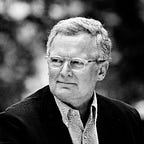Ten million people working together for ten minutes
A firm is normally seen as an entity that is separate from its members. After specific financial investments have been made, the firm is defined by the ownership of the physical assets and the power that the people who made these investments have. The owners choose their representatives, who act as the “agents” of the “principals”, the owners. The agents/managers then choose the workers. The most important role in this model for the agents/managers is to serve the interests of the owners, the people who made the financial investment.
As a result, the relationship between the company and the contributors of financial capital is very different from the relationship between the company and the employees. Employees are seen as a resource, although a human (HR) resource, thus kind of differentiating human beings from other materials serving the value chain. The role of the employee/resource/human being is derived from the process and the machinery. The management target here is a close fit between the skill set of the employee and the demands of the value chain. Because of this close fit, when major changes are planned, it is more often good news for the investors than for the employees.
The modern firm has developed into a perfect vehicle for financial contributions and as a toolkit serves the needs of financial investors well, at least in good times. As creativity and knowledge define success today, access to capabilities is as important for a firm as access to money. But what if people mattered even more than money? What if it is going to get harder in the future to get knowledge workers’ contributions than to get financial investors’ contributions?
Should firms then serve ideas and creativity more than they serve money?
Is the way we think about firms helping us to meet the challenge of the future or is the mainstream theory of the firm an obstacle for us? Firms are social and legal constructs. Firms don’t tell us what they are. They are what we think they are. Should we renew our old construct of the firm being based on mass production and high capital costs to a newer version, a low-cost, lightweight, knowledge-based view of the firm?
In the knowledge-based world we live in today, a knowledge worker is a knowledge worker because of a particular experience base. Being able to do knowledge work requires learning, very often a lot of learning, and for a long time. Thus the capabilities of a knowledge worker can be seen as resembling accumulated capital, following the same kind of logic as we use when we speak about the accumulation of financial capital. However, here the term “human capital” is only used as a metaphor in describing the new relationship between a firm and its employees.
Skills are very different from money. Knowledge work is always contextual, while money is generic. Money can be used for books or bookings, but in knowledge work it matters who does what, when, and with whom. Thus, the skills of knowledge workers cannot be seen as resources or as generalized labor. Knowledge work involves specific contributions to specific problems. The context matters.
The new view understands firms as contextual interaction, rather than seeing them as entities outside that interaction. Neither is it helpful anymore to prioritize financial investments above human capital investments. The knowledge-based view sees firms as continually evolving live networks of investments and interaction
A knowledge worker is always an investor. This means that in practice we should not talk any more about the employer-employee relationship, when talking about knowledge work. Instead, it is an investment-investor relationship.
The challenge for the firm is to be inviting to as many contributions/investments as possible, from as many people as possible. Another difference from the industrial model is the growing need to cross organizational and geographic borders when trying to optimally match tasks and skilled contributions. The form of a firm doing this resembles an Internet-based platform. Firms become multi-sided markets.
It may be good news. The networked business increases its intellectual capital as the nodes of the network do the same. The network acts as an amplifier of knowledge. But the demands for the worker grow. Being skilled is not enough. The challenge on the knowledge worker is to take responsibility for the value and growth of her human capital and to plan her “investment portfolio” carefully. Work should always equal learning.
As work requires interaction between people who need each other according to the context and the task, taking responsibility for human capital also requires taking responsibility for the value and growth of the human network. Networking is not enough. Building the network is as important as building human capital.
When the architecture of work is the network, dramatic changes are possible. It is already happening in games. The firm of the future may be ten million people working together for ten minutes.
